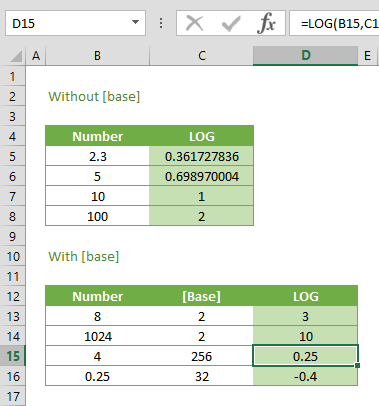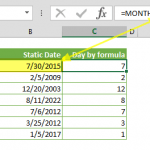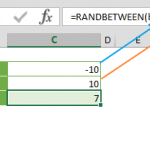The Excel LOG function is a Math formula that returns the logarithm of a given number and base. In this guide, we’re going to show you how to use the LOG function and also go over some tips and error handling methods.
Supported versions
- All Excel versions
Excel LOG Function Syntax
Arguments
|
number |
A positive real number for which you want the logarithm. |
|
[base] |
Optional. The base of the logarithm. The default value is 10. |
Examples
With [base]
Use the LOG function to calculate the logarithm of the argument number to the base 10. The equivalent math formula for this example would be log10number. Based on this, we can say that =LOG(number, 10) equals LOG(number). Here is a sample use:
Without [base]
Enter a value for the argument [base] to calculate the logarithm of the number to the specified base. For example,
Tips
- The equivalent math formula for this function is =log[base]number
- When the [base] argument is omitted, Excel will calculate logarithm of number to base 10 by default.
- You can also use LOG10 function for base 10.
- Use the LN function to calculate the natural logarithm of a given number.
Issues
The number argument should be a positive real number. Zero (0) or negative numbers will return a #NUM! error.








